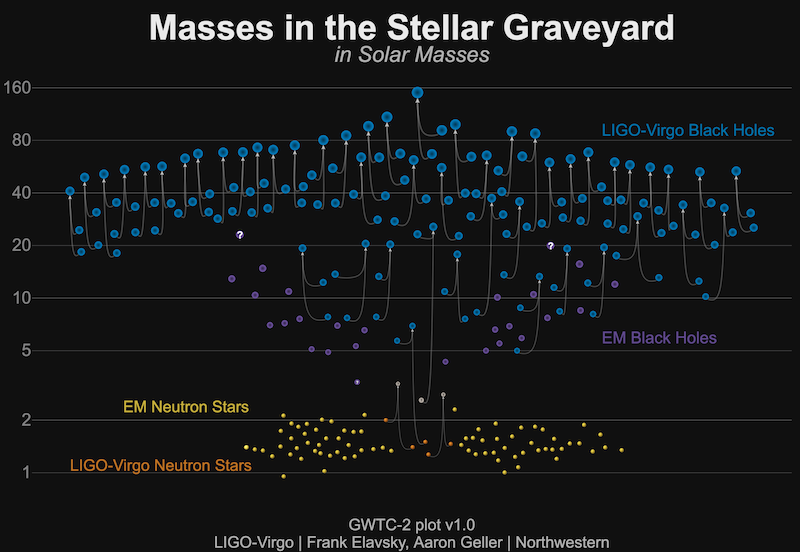28 Oct 2020 — After several months of thorough analysis, the LIGO Scientific Collaboration and the Virgo Collaboration have released an updated catalog of gravitational wave detections. The catalog contains 39 new signals from black hole or neutron star collisions detected between 1 April 2019 and 1 October 2019, which more than triples the number of confirmed detections. The new set includes some of the most interesting systems we have seen so far, and enables qualitatively new studies of astrophysical populations and fundamental physics.
The sharp increase in the number of detections was made possible by significant improvements to the instruments with respect to previous observation periods. These included increased laser power, improved mirrors and, remarkably, the use of quantum squeezing technology. All together, these enhancements resulted in a ~60% improvement in the range to which signals can be detected. The detectors were also able to operate without interruption more often than in the past, with an improved duty cycle of ~75% vs ~60%.
The new results reported in the extended catalog correspond to only the first six months of LIGO and Virgo’s third observing run. Results from the remaining five months are currently being analyzed. In the meantime, the LIGO and Virgo instruments are undergoing upgrades in preparation for the fourth observing run, for which they will be also joined by the KAGRA detector in Japan.
For more details, see the news story on the LIGO Lab website and the O3a Catalog detection page.
An online Zoom webinar discussing the results of the O3a catalog release is scheduled for Thursday, November 5th, 10:00am Eastern Time. Connection instructions will be posted to ligo.org when available.

